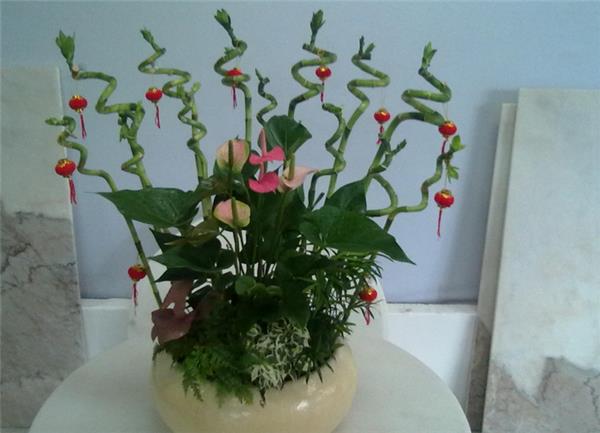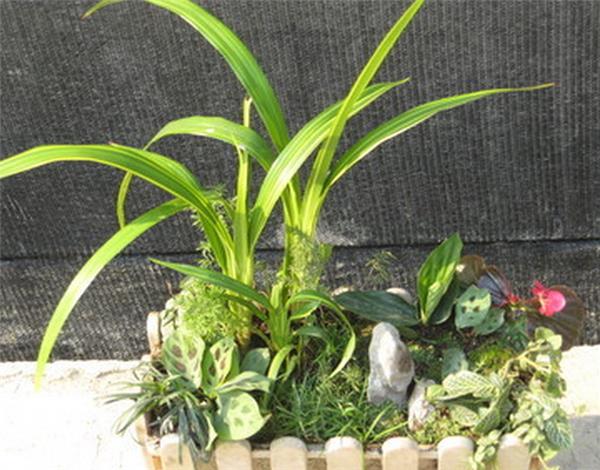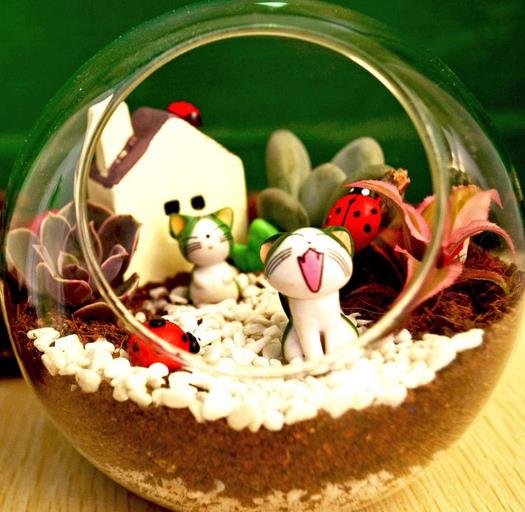The skill of combining potted plants makes you fall in love with spring.
The world is colorful because there are colors, and the collocation of any color is skillful, especially in home decoration, the choice of plants should also be matched with colors, so as to make the home more harmonious, below, let's take a look at some principles of plant color matching.

Color ring diagram is a very useful tool. Learning to apply color ring diagram can make complex color matching problems relatively simple. In the color ring diagram, yellow, red and blue can not be mixed with other colors, which are called three primary colors, and they are distributed equidistantly in the color ring diagram. And between them are equally distributed by the mixture of two primary colors of orange, purple, green, known as the secondary color (secondary color, intermediate color). When a primary color and a secondary color are mixed, a complex color is produced and placed in between the two. The color ring diagram consists of these 12 colors, and these colors are derived from different degrees of light and shade, such as yellow becomes light to lemon and darker to mustard. The ingenious application of color ring diagram can match the colors of different rhythms.
1. Complementary colors
Complementary colors match the colors at both ends of the diameter of the color ring, such as yellow and purple, orange and blue. This collocation can make each other's colors more distinct, produce a strong visual effect, and give people a bright and bright feeling. This is a common match with yellow malachite or marigold with purple hanging petunia.

2. Approximate color
Approximate colors are made of adjacent colors in the color ring diagram, such as yellow-green, yellow and yellow-orange, blue, blue-purple and purple. Approximate color matching color change is not significant, with obvious unity, the atmosphere is quiet and peaceful, giving people a sense of harmony and elegance, mostly used in more solemn occasions.
3. Monochrome
Monochromatic collocation is to take a color, with different degrees of depth to complete. This kind of collocation also has the unity, the atmosphere is quiet, elegant, is very popular in Europe. This collocation can often be enhanced with a contrasting flowerpot, but if you want to reflect a monochromatic theme, it is best to use a flowerpot with a similar color.

4. Warm color
Colors such as red, yellow and orange remind people of fire, sun and red flag, giving people a bright, warm and warm feeling, and are often used in festive occasions. If you want to make your basin brilliant, warm color is a good choice, but be careful not to go too far, or it will become tacky. Warm colors can be matched with terracotta, light red or copper brown flowerpots or containers.

5. Cool color
Blue, purple and light pink are cool colors, and their combination can create a quiet, cool and elegant atmosphere. Because the collocation of cool colors is relatively soft, it is easy to integrate with the surrounding environment, so it is widely used. Cold color collocation is suitable for planting in flowerpots with natural colors, such as grayish white, grayish yellow, bluestone, etc., as well as glazed flowerpots, and terracotta flowerpots are not ugly.
When considering how to match colors, you must first determine what kind of color matching effect you want, and then choose one color as the main color and use other colors as contrast and foil. Generally light color is the main color, dark color is used as foil, the effect is better. If light color and dark color account for half of each, it will make people feel dull and monotonous. When there is color disharmony, white is in the middle of the two colors, which can increase the ornamental effect. A group basin color should not be too much, generally 2-3 kinds is appropriate, too much color will give people a disorganized feeling, at the same time we should also take into account the color of the basin and the surrounding environment (scenery) color coordination.
The above is the knowledge of plant color matching, I hope it can help you.
Related
- Wuhan Hospital Iron Tree Blooming Result Was Instantly Frightened by the Gardener Master
- Which variety of camellia is the most fragrant and best? Which one do you like best?
- What is the small blue coat, the breeding methods and matters needing attention of the succulent plant
- Dormancy time and maintenance management of succulent plants during dormancy
- Minas succulent how to raise, Minas succulent plant pictures
- What are the varieties of winter succulent plants
- How to raise succulent plants in twelve rolls? let's take a look at some experience of breeding twelve rolls.
- Attention should be paid to water control for succulent plants during dormant period (winter and summer)
- Watering experience of twelve rolls of succulent plants
- Techniques for fertilizing succulent plants. An article will let you know how to fertilize succulent plants.



